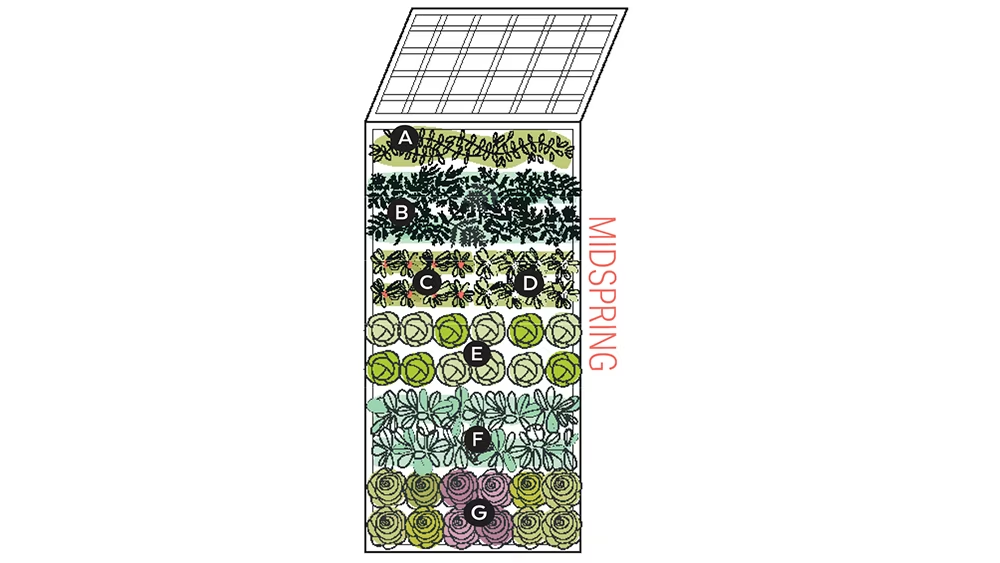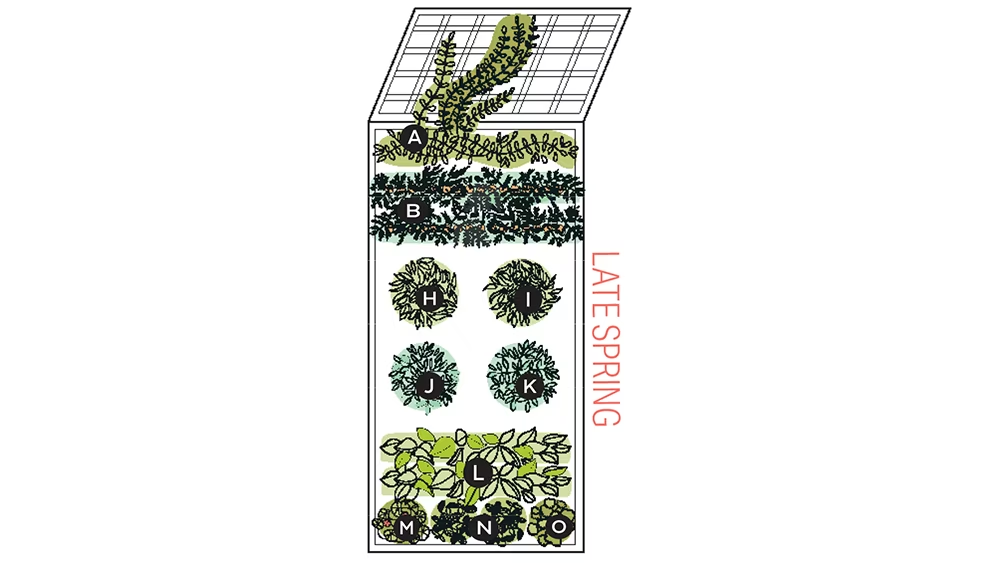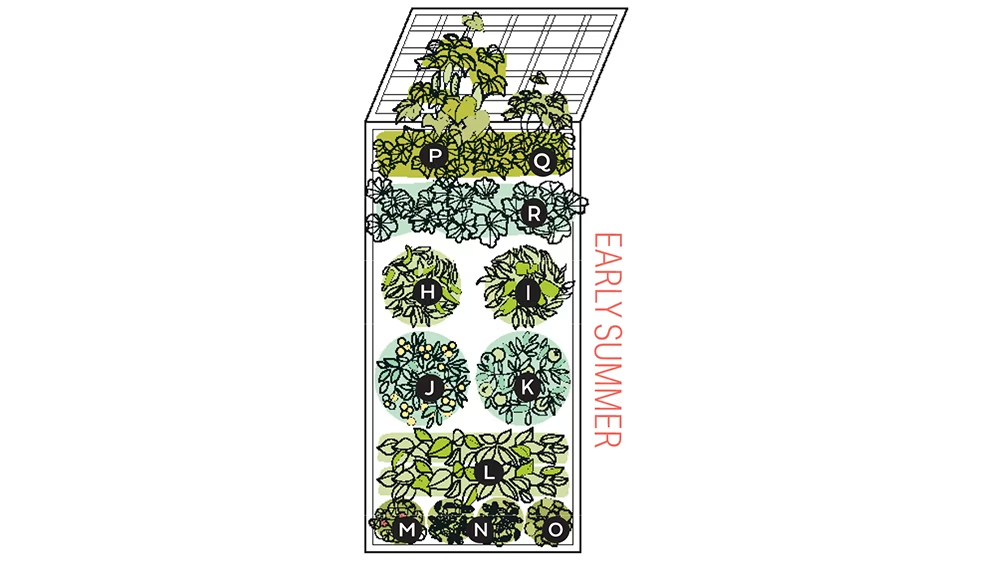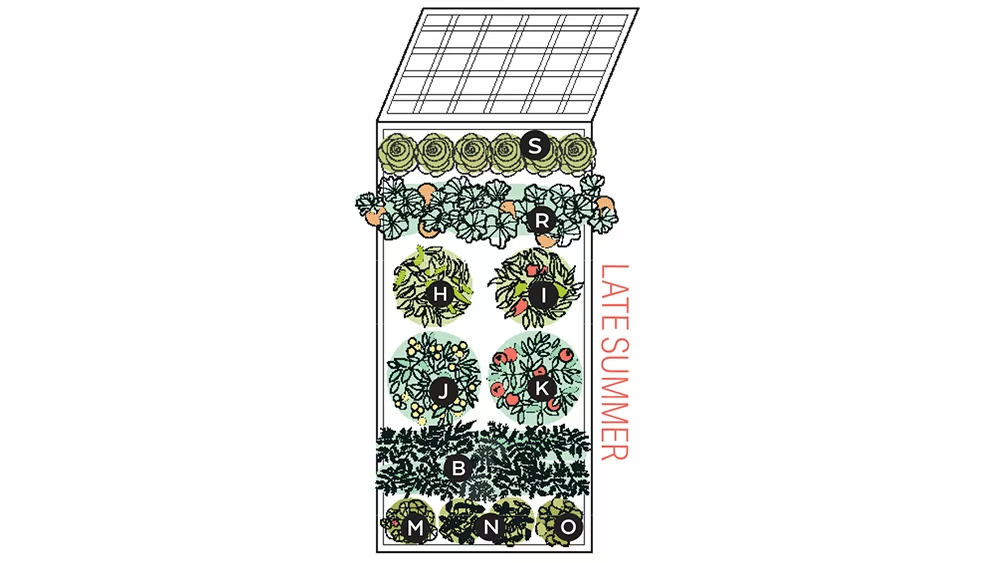
Written by Niki Jabbour
In my vegetable garden, succession planting is the secret to a nonstop harvest. It allows me to maximize productivity in my raised beds and harvest year-round, even though I live in a cold climate.
In addition to the extended harvest that I enjoy, there are so many other benefits to succession planting: It allows you to grow more food in a small space, and it reduces weeding and watering. Bare soil is an open invitation to weeds, so replacing spent vegetables with new crops keeps the soil covered, therefore reducing weed growth and conserving moisture.
Succession planting is a technique that works for every size space and type of garden. Even patio gardeners who grow vegetables in containers can practice it by seeding new pots every few weeks.
Succession planting doesn’t need to be complicated. See three simple strategies for this harvest-boosting technique to the left. You can use just one or all three!
Making a Plan
The first step in succession planting is making a plan. I’ve found that having a plan on paper or my computer keeps me on track. It can be as simple as making a list of what vegetables you wish to grow in each bed over the coming season. For example, one bed starts with lettuce, spinach and radishes. Once they’re harvested, follow up with bush beans, zucchini and cucumbers. In late summer when production from these crops has declined, they can be replaced with lettuce, turnips and arugula for autumn harvesting.
I like to start my succession planting plan in midwinter once the holidays have passed. This gives me time to order all the seeds I need for early crops as well as the successive plantings. When choosing what to plant, it helps to think about the length of your growing season and how long each variety takes to mature. Once your spring vegetables are pulled, do you have enough time to mature tomatoes or peppers, or should you stick to quicker vegetables like bush beans and cucumbers? To help calculate the amount of time each vegetable needs to grow and mature, read the “days to maturity” information listed in seed catalogs and seed packets.
Three Succession Planting Strategies
There are several ways to approach succession planting. Here are the three strategies I use to maximize production:

1. Plant one crop after another.
This is the most common technique for succession planting, and it’s also very easy to do. As one crop matures and is harvested, it’s followed by another planting. Depending on your growing season and the types of vegetables you choose to grow, you can likely enjoy two to four harvests from a single garden space during the main growing season.

2. Plant the same type of crop, but varieties that mature at different times.
You may have noticed that varieties of vegetables mature at different times. There are early, mid-season and late-maturing varieties of tomatoes, potatoes, cabbage, broccoli and peas. By choosing to plant two or more varieties with different maturity dates, you’ll have a long harvest season without the need for a second planting.

3. Plant a small amount, often.
This is my go-to strategy for fast-growing crops like radishes, turnips and bush beans. It helps avoid a glut of any one crop (and who really wants 100 radishes ready at once?), but also allows you to enjoy the highest quality harvest. Most vegetables maintain their quality for a week or two once they’ve matured, and if you don’t harvest them in a timely manner, they’ll grow bitter and woody (radishes, carrots and turnips) or tough with overdeveloped seeds (bush beans and peas).
Succession Planting in Action
Illustration: Lisa Nunamaker
You can grow a lot of food in a single 4-by-8-foot raised bed. This planting plan that shows the parade of vegetables planted from midspring to late summer with the harvest for most lasting until frost. The carrots, lettuce and parsley are cool-weather tolerant and can be harvested about a month past the first frost, longer if protected with a mini hoop tunnel. Learn more about the plants (and the days to harvest from transplanting) in the list below.
A: ‘Sugar Snap’ peas [Pisum sativum] - Sweet, crisp pods that are produced in abundance in early summer. Trellising is necessary as the plants grow about 6 feet tall. (58 days)
B: ‘Yaya’ carrots [Daucus carota sativus] - An early maturing carrot ideal for spring, summer and autumn harvesting. The roots grow about 6 inches long and have a sweet flavor. (56 days)
C: ‘Cherry Belle’ radishes [Raphanus sativus] - An award-winning radish that matures just weeks from sowing seeds. The round roots have red skin and crisp white flesh. (23 days)
D: ‘Hakurei’ salad turnips [Brassica rapa subsp. rapa] - These ping-pong-ball-sized roots have a sweet taste and are delicious raw or cooked. The tops are also edible and can be steamed or enjoyed in a salad. (38 days)
E: ‘Katarina’ cabbage [Brassica oleracea var. capitata] - Baby cabbage that is very early to mature and perfect for early summer or fall harvesting. The compact heads grow just 4 inches across. (45 days)
F: ‘Seaside’ spinach [Spinacia oleracea] - Spade-shaped deep green leaves that provide weeks of baby spinach greens. (30 days)
G: ‘Red Saladbowl’ and ‘Green Saladbowl’ lettuce [Lactuca sativa] - These classic varieties form dense rosettes of red and green leaves. They can be harvested earlier for baby lettuce or allowed to mature for full-sized heads. (26 days for baby leaves; 50 days for mature heads)
H: ‘Jedi’ jalapeño pepper [Capsicum annuum] - The fruits of this early and productive variety are huge, growing up to 4 ½ inches long. Medium heat. (72 days to green fruits)
I: ‘Ace’ sweet pepper [Capsicum annuum] - Extra early and ideal for cooler climates. The plants produce a heavy crop of medium-sized peppers that are green maturing to red. (50 days to green, 70 days to red fruits)
J: ‘Sungold’ cherry tomato [Solanum lycopersicum] - Incredibly sweet, cherry-sized fruits are bright gold and produced in abundance on 6-foot-tall plants. Staking is necessary. (57 days)
K: ‘Galahad’ tomato [Solanum lycopersicum] - Determinate beefsteak tomato that grows just 4 feet tall yet yields a large harvest of delicious slicing tomatoes. Disease resistant. (69 days)
L: ‘Provider’ bush bean [Phaseolus vulgaris] - A popular green bean variety that is early to crop, reliable and disease resistant. Harvest the pods often to encourage heavy production. (50 days)
M: Nasturtium [Tropaeolum majus] - Nasturtiums are beautiful and easy to grow with edible flowers, leaves and seeds. They also attract pollinators like bees to your garden.
N: Basil [Ocimum basilicum] - Basil is essential in my garden, and I like to grow varieties like ‘Everleaf’ and ‘Rutgers Devotion DMR’ that offer resistance to downy mildew.
O: Curly parsley [Petroselinum crispum] - Brightly flavored, lacy leaves produce lots of leaves the first year, flowering the second if left in the garden. The large, flat-topped flowers attract beneficial bugs.
P: ‘Suyo Long’ cucumber [Cucumis sativus] - This traditional variety from China has long, slender fruits. (61 days)
Q: ‘Lisboa’ cucumber [Cucumis sativus] - This slicing variety has crisp, non-bitter fruit. (45 days)
R: ‘Butterscotch PMR’ winter squash [Cucurbita moschata] - This mini butternut squash is almost too cute to eat! Each fruit is 1 to 2 pounds and has a sweet, rich flavor. (100 days)
S: ‘Jericho’ lettuce [Lactuca sativa] - Romaine that can be picked as a baby green or matured to full-sized heads. It’s heat tolerant and easy to grow. (29 days to baby leaves)
In her latest book, Growing Under Cover, Niki shares the many garden covers she relies on to boost yield and reduce pests. Author and article courtesy of our sister publication, Garden Gate. Get more great gardening info at gardengatemagazine.com















